
Pattern Recognition Vol. 8.5: The Year in Vaporwave
In this accompaniment to his Year in the Online Underground piece, Adam Harper—the premier writer on new, emergent, underground music—reflects on the year in vaporwave and selects his favorites. Illustration by Inka Gerbert.
2013 was the year that vaporwave ballooned: Bandcamp and SoundCloud bubbled over with innumerable anonymous accounts huffing chopped and screwed loops of late twentieth-century studio pop and muzak. The new categorization has been controversial—some of the genre’s original proponents went on record saying it had died—and it represents what might be one of the most radically minimal and accessible stylistic formulas ever devised. Vaporwave has been rightly compared to punk, but the ease with which anyone with a computer and an internet connection can make and upload their own vaporwave album (never mind whether it’s worth listening to or not) makes the 1970s punks, with their guitars, drums, and lyrics, look like nineteenth-century orchestral composers.
Although vaporwave can all too easily become formulaic, the many releases this year that either tagged themselves ‘vaporwave’ or clearly adopted the style show a startling creativity and diversity. Sometimes fragile and lo-fi, sometimes glistening with hi-fi sheen, sometimes poignant, sometimes deeply funky, and sometimes deliriously funny, the best releases were always more than one-dimensional, contributing both something new and carrying a range of latent, sometimes contradictory emotions. There are those who suggest (as I did) that vaporwave can be heard as an evocative conceptual project, and there are those (many of them the musicians themselves) that maintain that it’s just a bit of fun. Both sides are right and wrong, depending on the release in question, what you’re looking for, and how you want to listen.
While assembling my list of the best online underground releases of the year, this amazing diversity became more evident to me than ever, and knowing that it would only be lost in competing for limited space with albums taking a very different compositional approach, I decided to do a separate list for vaporwave. It also doubles as an introduction to the recent history of the genre for the unfamiliar, especially those bewildered by the dozens of thumbnails Bandcamp presents today.
The list does not take the distinction some have made between vaporwave and the proposed genre of ‘mallsoft’ into account—mallsoft conjures the muzak played in shopping malls, which to me is surely a big part of what vaporwave has always suggested and can be considered a subgenre at the most. I have not included in this list various post-vaporwave styles, namely a) straight-up non-conceptual edits of funk, disco, and other late twentieth-century pop (such as Hit Vibes by Saint Pepsi and ネオ東京 by マクロスMACROSS 82-99, both quality listens)—perhaps the deciding factor for not counting this stuff is that the Keats // Collective label generally don’t use the vaporwave tag on Bandcamp, probably a sign of a desire to separate from the genre—and b) flavors of beats and electronica that have a hint of virtual plaza but significantly transcend it (such as Contact Lens’ Free Throw Banquet, Blank Banshee’s Blank Banshee 1, or Metallic Ghosts’ The City of Ableton). This is partly because this music isn’t quite vaporwave any more so can’t be compared on those terms (and/or wouldn’t want to be), but also because to include it as well the pool would become so large that ten titles wouldn’t do it proper justice. I have, however, included some examples of what I call ‘new-composed vaporwave’, that is, vaporwave that has been made largely from scratch rather than sampled. Whether or not vaporwave ought to be considered an inherently sample-based genre or one that merely has a certain style, whatever the means, will depend on how the meaning of the term develops.
The competition for the top spot was fierce, and for me encapsulated the way that vaporwave has diversified into a wide spectrum of moods, creative approaches, and musical effects. The battle came down to one of body versus soul and heaven versus hell, with one release a heroically charismatic and spot-on sequence of funny, flashy, and classy grooves, and the other a carefully curated selection of deeply emotional fragments each with its own uniquely tragic intensity. How to decide which form of musical appreciation is better than the other? How to compute the rate of conversion between the two currencies? At one point during the bout, the soul/hell release eloquently made the argument that heaven is at best distant, at worst a lie, and pointed out that the body will always progressively decay until the inevitable moment of death, and this profound truth put soul/hell in the lead. But then on Thanksgiving I got together with friends and cooked a meal, and I decided to play body/heaven in the background, knowing everyone would dig it. Everyone did, four times in a row, and it made the perfect convivial supplement to a light-hearted but heartfelt gathering—YES, this was what was most important! With body/heaven now in the lead, I turned to soul/hell for a riposte, playing it through my earphones while taking several night-buses home. Ah, but this was soul/hell’s home ground, of course, and it once again asserted its aching melancholy beauty.
Alright screw this, I thought. Who says there can only be one? The top spot goes to both, and they’re announced in alphabetical order.
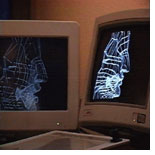 1. Infinity Frequencies – Computer Death
1. Infinity Frequencies – Computer Death
With its not-quite-human muzak mystique washed up prone on the shores of consciousness, eroded by passivity, time, and endless signal duplication, Computer Death is the definitive vaporwave album. It is a ritualistic sequence of tiny disasters and anaesthetic prayers scattered post-Babel across gently humming screens. The 3:00am mediascape is that of the information screen in the hotel single, the TV perched in the far corner of the Chinese takeaway, and the digitally overmodulated airline sound-branding heard through cheap earphones on that pitch-black night-flight, surrounded by sleeping strangers. The samples—God knows where they were really rescued from—have precisely the sort of innocent, well-meaning tunefulness that takes on an enormous significance when one is heavily drunk, catastrophically tired, or marooned in a human-made, human-designed environment devoid of actual humans. Computer Death has such depth because it’s so modest and light—its little moments of drama are no less heartfelt for having been passively produced and passively consumed. In fact, by paying such unusual attention to the muzak’s lonely looping, it brings out the human in the non-human, breathing shallow.
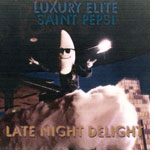 1. LUXURY ELITE // SAINT PEPSI – LATE NIGHT DELIGHT
1. LUXURY ELITE // SAINT PEPSI – LATE NIGHT DELIGHT
With its classy yet carefree connoisseurship of some of the funkiest, most honeyed grooves hidden deep within yesteryear’s gaudiest adult jams, LATE NIGHT DELIGHT is the definitive vaporwave album. The split release, by two of latter-day vaporwave’s most cherished figures, is a founding document of a new and influential trend within (or after, depending on your point of view) vaporwave that prefers a simple dollop of old-style cheese-cool to an ambivalent portrayal of techno-cultural muzak. At first, I was a little disappointed that this tendency had abandoned the former in favor of basic retro hedonism, but LATE NIGHT DELIGHT is an album I defy you not to love for its sheer yuppie-dad charm and the obvious aptitude for selection (Infinity Frequencies has a similar skill, but with very different results). And actually, unlike Saint Pepsi’s follow up smash Hit Vibes, LND doesn’t simply refer the listener straight back to forms of historical groove that already had a huge reputation and underline them—the slowing down of time and lowering of pitch are calibrated just so, achieving the ideal degree of sluggish swagger. It’s a technique that other vaporwave producers often struggle to achieve, instead going too far and letting their grooves stretch and etiolate into uselessness. LATE NIGHT DELIGHT really laid down the high watermark for vaporwave’s fun side.
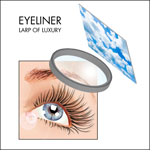 3. Eyeliner – LARP of Luxury
3. Eyeliner – LARP of Luxury
On last year’s High Fashion Mood Music, Eyeliner was the artist who made it most clear to me that vaporwave could be a real labor of love. Long-term New Zealand synth/punk label Crystal Magic Records came upon vaporwave, a category they readily identify LARP of Luxury with, by convergent evolution. The album is both a key example of skilfully new-composed vaporwave and of the luxury theme, which associates its music with the glamor of the finer things in life (see also Luxury Elite, Contact Lens and, of course, Ferraro). Eyeliner grapples particularly with the more dated and ungainly aspects of perky mood music, such as the sort of FM-synth bell-tones one might have heard chiming from an ersatz marble clock-tower in some pomo atrium in 1987. Yet such tracks are given highly contemporary names such as “Nespresso”, “iPod Touch”, and “Roomba”, as if to historicize such potentially flash-in-the-pan developments. But Eyeliner doesn’t seem in it to poke fun, not with all the effort he’s gone to, and neither will the listener be— the range of instrumentals on offer might be rather strongly-flavored, but they’re just too beautifully constructed and friendly not to embrace.
 4. Miami Vice – Palm Haze
4. Miami Vice – Palm Haze
Another one from the heavyweight label Illuminated Paths, this bittersweet gem sounds like it might be part sampled and part new-composed, though I can hardly tell which is which. The clue’s in the moniker—this artist is certainly taking something from Jan Hammer’s famous soundtrack to the eighties cop-show Miami Vice, but conjures a mood more complex than pink bar decor and light green shoulder pads. “Tokyo Negative” is rather like a counterfeit version of the soundtrack’s hit “Crockett’s Theme”—of the sort that composers for commercials are sometimes asked to write when the original song is too expensive—but this is no bad thing. And the result is one of the most gorgeous vaporwave tracks out there, its dripping crystal bliss quivering through the lo-fi like you should gently wrap a towel round it. While the rest of the tracks could have paled into meaningless in comparison, they don’t, and the whole makes for one of the genre’s most powerful synth-led albums.
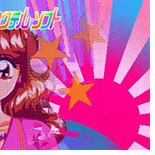 5. Coolmemoryz – i S P I R I Tメディア「2 X 1 3 」
5. Coolmemoryz – i S P I R I Tメディア「2 X 1 3 」
An early dabbler in the vaporwave aesthetic and one of the network’s more sonically creative producers, Coolmemoryz’s SoundCloud account saw a wide range of brilliant tracks come and go that combined studio flavours and glitchy electronic tinkering almost to the point of sheer noise. The Floridian’s most comprehensive offering yet assembles a number of particularly short cuts of the most lurid paradise pop, making them stutter with pitchshift and subjecting them to various forms of cubist attack (or is it just an alien embrace?). A fractious truce between evocative allure and formalist abstraction emerges.
 6. PrismCorp Virtual Enterprises – ClearSkies™ and Home™
6. PrismCorp Virtual Enterprises – ClearSkies™ and Home™
Released on the same day and showing a clear stylistic continuity, I’m treating these seemingly non-sampled twins as a double album. They were the latest project from the multi-aliased Vektroid, and (especially if they were new-composed, but even if not) confirm her status by some distance as the most technically accomplished of vaporwave’s founders. ClearSkies™ and Home™ reflect both the dawning age of the personal computer in the mid-nineties and the demo programs of that era’s keyboards. With levels of straight-faced, sincere kitsch that risk putting Ferraro, ADR, and YEN TECH to shame, the albums are one of the extended vaporwave family’s most monolithic statements.
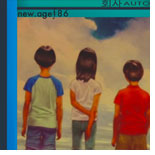 7. 회사AUTO – new . age∮86
7. 회사AUTO – new . age∮86
The prolific 회사AUTO (‘Company Auto’) emerged this year as particularly successful and unique among vaporwave’s newer producers, and though it was a close call, new . age∮86 was my personal favorite. 회사AUTO tends to focus on the cooler, more streetwise side of eighties and nineties mood music, locating smooth breaks and instrumentals ideal for an adult-contemporary urban hang suite. As well as claiming this particular territory well, 회사AUTO uses panning to create a sense of the tunes coming in and out of few, and messy digital time-stretching to hint at both a decayed and slapdash computer copy and cybernetic growth. It’s a unique spin that aptly represents vaporwave’s considerably expanding possibilities.
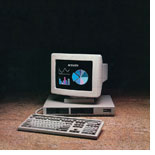 8. Qualia – Activity
8. Qualia – Activity
Picking one of vaporwave’s tamer couplings of moniker and title, the lonely Activity is a lovely album mixing classic hi-fi vaporwave with synth instrumentals and experimental beats. What it lacks in originality—the album betrays a clear debt to several phases of Daniel Lopatin’s career, much more than most vaporwave—it ably makes up it for in some unrivaled moments of control and elegance. As well as the wonderfully tender “New-U”, another competitor for the top ten vaporwave tracks ever, there are some great sketches for less common sources, such as speech (“Zenit”) and what sounds like a koto (“Mày lỗi thời”).
 9. ULTRA ウルトラ – CYBERNET UTOPIA
9. ULTRA ウルトラ – CYBERNET UTOPIA
CYBERNET UTOPIA‘s gooey, reverbed jams and painfully earnest dance-based inspirational vibes suggest a magnificent fiberglass dome either immediately before or long after hosting the biggest motivational seminar Planet Earth has ever seen. With many vaporwave producers opting for a blatantly retro charm, ULTRA ウルトラ instead revisits that alluring tech-revolution aspect of the genre rarely seen since INTERNET CLUB got liquidated. Suggestions of a user manipulating twinkly digital interfaces at the beginning of many of the tracks are a nice touch.
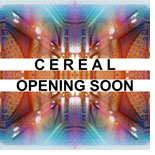 10. Cereal – Opening Soon
10. Cereal – Opening Soon
This simple but wicked little EP-length release is at the dead center of the mallsoft sound. Opening Soon (a likely story) is made up like a field recording of a shopping mall, and it’s funny as hell—the stroke of genius is both the carefully naturalistic acoustic presentation of the mall muzak and the way it periodically switches up, exactly like a CCTV monitor would. The sounds of thronging shoppers are not quite convincing, they don’t fit the acoustic, but that only makes things better—they’re those strange two-dimensional images of people and crowds that are inserted into architects’ 3D renderings of planned projects, intended to show what the place might look like when in use. One of the things vaporwave can do best is reveal and celebrate the weird gap between dreams and reality, and Opening Soon achieves this in its own wonderfully concise way.
Wanna keep wandering through the fog, fumes and fairy stories? Here are some worthwhile releases that didn’t quite make the list but do deserve an honorable mention:
AWALthe1st – Floppy Disk
Botanicals – Soul Ipsum
БИЗНЕСМЕН (‘Businessman’) – BUSINESSMAN EP and ТКАНИ-КОМПАНЬОНЫ
General Translator – Amorotica
Lindsheaven Virtual Plaza – NTSC Memories
Local News – Ghost Broadcast
Luxury Elite – Blind Date
WTF.FM – AUDIO_TS
SunCoast Web Series – Digital Water
ショッピングワールドjp – MARKET WORLD
Mensa Group International – Mini-LP (especially for naming a track “Ryan Gosling”, and especially that track)
~
Adam Harper is the Rouge’s Foam blogger and author of Infinite Music: Imagining the Next Millennium of Human Music-Making. To read more editions of Pattern Recognition, click here.
Published December 05, 2013. Words by Adam Harper.
